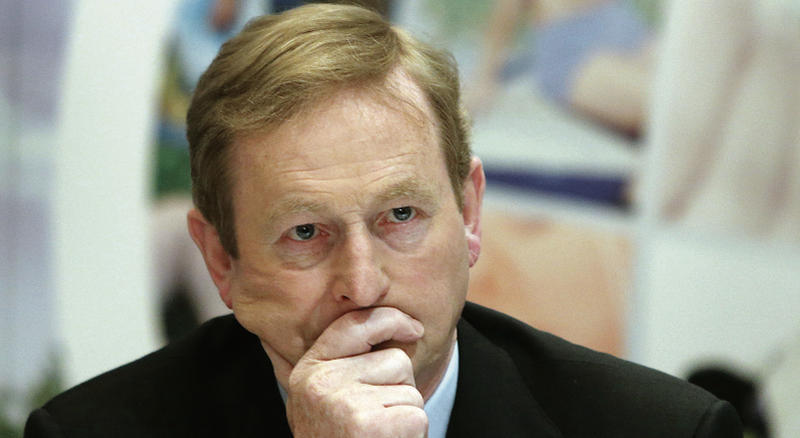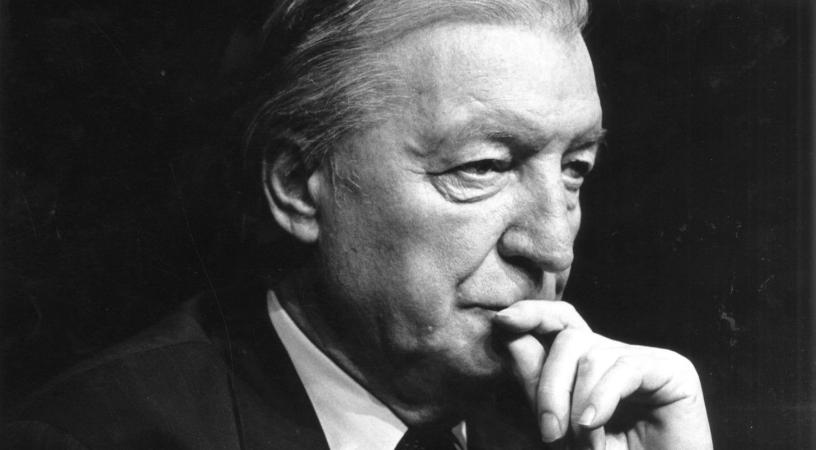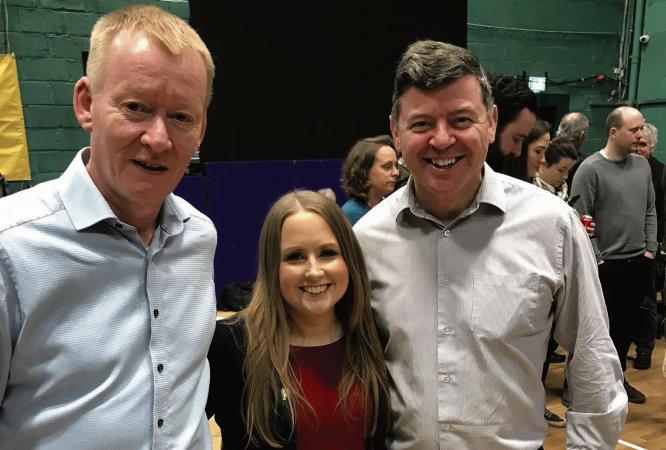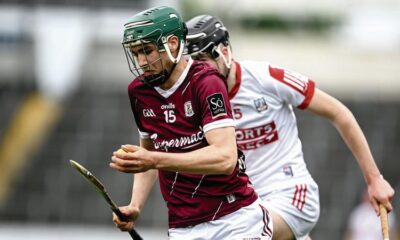Political World
Politicians unable to crack people’s code

World of Politics with Harry McGee – harrymcgee@gmail.com
Whenever a new government is formed it will be our equivalent of Dagen H. That was the day in 1967 that Sweden decided to switch from driving on the left hand side of the road to the right. What ensued was temporary chaos and confusion. After a while this strange new arrangement began to become normalised.
It is over one month since the country voted in the General Election. Now, the pathway to government formation looks as uncertain as it did when the results first came in. When the people spoke they did so in a coded language that no politician has yet been able to crack.
It’s not yet the longest period between election and Government that has been seen in the State. After the general election in November 1992 it took 42 days to form a Government. There was no difficulty with actual numbers back then: it was more to do with existential matters. Fianna Fáil and Labour had separately to absorb a fundamental sea-change in core direction.
This time both problems exist, existential and numbers. And they are writ large. There is a slim chance a government will be in place on April 6th when the Dáil returns for a second time to vote on nominations for Taoiseach. But given the piecemeal progress in discussions so far, it still looks more likely that it will be mid April before a new government is through the gap.
The most likely scenario emerging is a minority government led by Enda Kenny. But if that is the case, it will be a very different type of administration to any that has been seen before. It
The enormity of the task was borne home last week when Fine Gael stated its first major move with a day-long session involving its negotiators and 15 Independent and two Green Party TDs. With advisers and officials there were over 50 people packed into a room in Government buildings for over six hours.
Fine Gael’s approach marked a big departure from previous discussions on government formation. For one, Fine Gael made a decision it would produce no document setting out where it stands. This is highly unusual as a document is always seen as the foundation block of any negotiations. In 1992, Fianna Fáil adviser Martin Mansergh scoured the Labour manifesto looking for points of agreement and produced a document that chimed with Dick Spring’s policy objectives.
If you go back to the foundation of the State, the Treaty was based on a document written by the British prime minister David Lloyd George. The advantage of having a document is that even though amendments are sure to be made, it is your document. Therefore, its central principles are likely to survive even the tensest of talks.
For more, read this week’s Connacht Tribune.
Connacht Tribune
The fine art of good timing when it comes to elections

World of Politics with Harry McGee
Academically, politics is described as a science. But in the real world, it’s more of an art – and one of the big decisions a Government has to make is to decide when to call an election.
Will they see out the full term, or will they go early – either to mitigate the damage they will ship, or to secure a victory before things go awry, or the economy takes a dip, or some kind of controversy erupts?
Timing is everything.
And there’s a bit of art to that – not to mention a lot of luck. If you call it early and win big, you’re a genius. If you call it early and lose, you are the political version of the village fool.
Charlie Haughey was a poor judge of the public mood. Twice he called snap elections and on both occasions they backfired. Haughey succeeded Jack Lynch as Taoiseach in late 1979 and did not – technically – have his own mandate. He tried to remedy that by calling an election in 1981. But it recoiled. Ray MacSharry warned him not to hold it during the H Block hunger strikes when republican prisoners were dying each day. He did not listen to the advice and found himself out of office.
After his return to power in 1987, Haughey tired of presiding over a minority government that kept on losing votes in the Oireachtas (the opposition won nine private members motions).
So he called a snap general election and it backfired. Fianna Fáil lost seats and had to broker a coalition deal with the Progressive Democrats and his long-standing political adversary Dessie O’Malley.
For more, read this week’s Connacht Tribune.
Connacht Tribune Digital Edition App
Download the Connacht Tribune Digital Edition App to access to Galway’s best-selling newspaper.
Click HERE to download it for iPhone and iPad from Apple’s App Store, or HERE to get the Android Version from Google Play.
Or purchase the Digital Edition for PC, Mac or Laptop from Pagesuite HERE.
Get the Connacht Tribune Live app
The Connacht Tribune Live app is the home of everything that is happening in Galway City and county. It’s completely FREE and features all the latest news, sport and information on what’s on in your area. Click HERE to download it for iPhone and iPad from Apple’s App Store, or HERE to get the Android Version from Google Play.
Connacht Tribune
Inch protest arguments are more subtle than Oughterard

World of Politics with Harry McGee
I was cycling down Mount Street in Dublin on Tuesday. It’s a wide esplanade that links the Grand Canal with Merrion Square. The street is a mixture of fine Georgian buildings and modern office blocks.
About half-way down is the office of the International Protection Office, which deals with asylum seekers who have arrived in the country.
Needless to say, the office has been overwhelmed in the past year. Besides an estimated 80,000 refugees who have arrived from Ukraine, there have been about 20,000 people from other parts of the world who have arrived into Dublin (mostly) claiming asylum.
The numbers peaked around Christmas, but they have been falling a little. In January, more than 1,300 people arrived seeking asylum but the numbers fell back to 831 and 858, in February and March respectively.
They are still huge numbers in a historical context.
So back to my cycle on Tuesday. I knew that some asylum seekers were camping outside the International Protection Office, but I was taken aback by how many. There were six tents lined up on the pavement directly outside. Then on the ramp that led down to the basement carpark on the side of the building, there were about another 20 tents.
It looked like what it was, a refugee camp in the middle of Dublin’s business district. If you pan out from Mount Street, you will find tents here and there in nearby streets and alleys. There were a good few tents in an alleyway off Sandwith Street about 500 metres away.
For more, read this week’s Connacht Tribune.
Connacht Tribune Digital Edition App
Download the Connacht Tribune Digital Edition App to access to Galway’s best-selling newspaper.
Click HERE to download it for iPhone and iPad from Apple’s App Store, or HERE to get the Android Version from Google Play.
Or purchase the Digital Edition for PC, Mac or Laptop from Pagesuite HERE.
Get the Connacht Tribune Live app
The Connacht Tribune Live app is the home of everything that is happening in Galway City and county. It’s completely FREE and features all the latest news, sport and information on what’s on in your area. Click HERE to download it for iPhone and iPad from Apple’s App Store, or HERE to get the Android Version from Google Play.
Connacht Tribune
Sinn Féin hunt for seats in ‘locals’ across Galway

World of Politics with Harry McGee
God that was a dramatic and historic weekend in England, wasn’t it? So much excitement, so much change, so much hype, so much out with the old and in with the new, and what looks like the coronation of a new leader. Yes, the local elections in Britain were something else weren’t they!
Apologies for not going on about King Charles III but the contract I signed when I became a lifelong republican forbids me to discuss the topic!
I know the British local elections sound a bit boring by comparison, but the results were stunning.
The Conservatives lost nearly 1,000 seats, the British Labour Party gained almost 500 and both the Lib Dems (with 350 gains) and the Greens (gaining over 200) also had amazing days at the polls.
It was Labour’s best day since 2002 but its victory was only partial. The Greens and the Lib Dems actually made gains at the expense of Labour in more affluent areas, and in parts of Britain where there were high numbers of graduates.
It was in the Red Wall constituencies in the North of England where the Labour recovery was strongest. These are working class constituencies with pockets of deprivation where people voted for the Labour Party forever. But all of those constituencies voted for Brexit and then voted for the Tories in the next general election. Labour is now winning back some of those votes.
Local elections are classified as second-tier elections which essentially means – from a national perspective – they are not life-or-death affairs, and not everything turns on them. Of course, it’s really important to have good local representation. But they are not an amazing weather vane for who rules the country.
For more, read this week’s Connacht Tribune.
Connacht Tribune Digital Edition App
Download the Connacht Tribune Digital Edition App to access to Galway’s best-selling newspaper.
Click HERE to download it for iPhone and iPad from Apple’s App Store, or HERE to get the Android Version from Google Play.
Or purchase the Digital Edition for PC, Mac or Laptop from Pagesuite HERE.
Get the Connacht Tribune Live app
The Connacht Tribune Live app is the home of everything that is happening in Galway City and county. It’s completely FREE and features all the latest news, sport and information on what’s on in your area. Click HERE to download it for iPhone and iPad from Apple’s App Store, or HERE to get the Android Version from Google Play.












